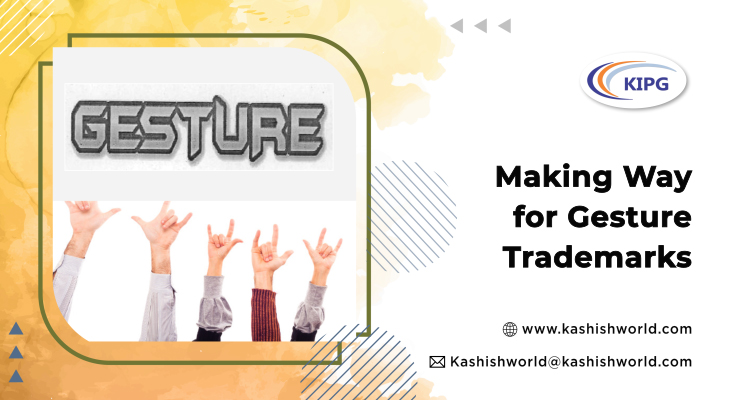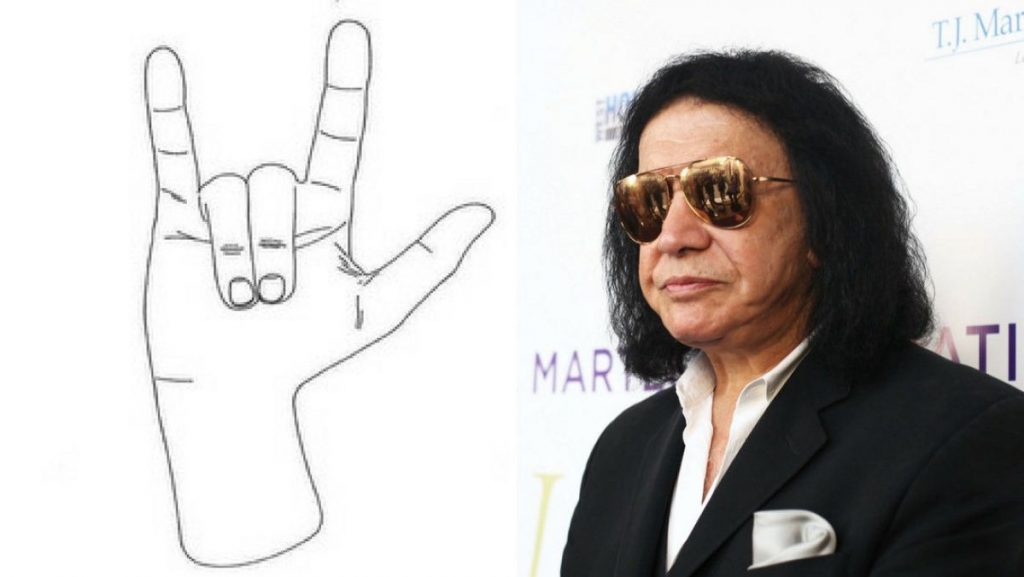
Of the innumerable ways of marketing a product and enabling efficient identification of the origin of such products, trademarks stand out to be of great prominence. Proprietors of brands are increasingly looking for unconventional mediums to create an edge in the market. Here, non-traditional trademarks like sound marks, texture marks, holograms, motion marks, and gesture marks hold utmost importance.
Gesture Marks: What Are They?
As the reputation of non-traditional marks follows, registering such marks is nothing short of an uphill battle. Often, these marks are gathered from popular recognition and association with public figures and performers. The registration of such gestures is a strategic way to derive economic benefits from such acts to prevent copycats in the industry.
It is worthy of consideration that the standard human body or basic elements forming a part of the human anatomy would not garner Trademark Protection since it would fall in the pit of a ‘generic’ mark on the spectrum of marks. However, this is not an absolute bar since celebrities like Kim Kardashian have utilized their iconic ‘hour-glass’ figure and mirrored the same as a perfume bottle.
Now consider a few other common modes of making such symbolic poses, gestures, or figures, such as Instagram filters, external software, Snapchat filters, etc. These all modes of making a caricature or an illustration, even if utilized to capitalize through the mode of product endorsement or manufacture of a product, would not stand good in law. It is so because these are an output of software whose companies do not authorize such commercial exploitation of their derivatives, due to which only common use can be made. As an example, if Barak Obama launches his fashion brand utilizing an Animoji, which is a customized and animated version of emojis by Apple, Inc., allowing a person to replicate the facial features to make the emoji look like oneself, he will be pre-empted and restrained from such use.
Check-List for Gesture Marks
All marks, whether conventional or unconventional, are required to perform a few crucial functions, which are summed below:
- The gesture mark should be graphically representable. Therefore, it should be able to get embossed on the products or services to appeal to the eye of the masses.
- The gesture mark should be utilized concerning a product or service. The mere recognition of a popular gesture for the sake of monetization and security will not be guaranteed by the Trademark Law.
- The gesture mark should enable the identification of the source or origin of the products or services associated with the mark.
- The gesture mark should be differentiable from that of its competitors in the market to deter confusion. It also helps to further the cause of the Trademark Law of different nations to ensure fair competition in trade and commercial parlance.
Specimen of Registered Gesture Marks

- KISS bassist and singer Gene Simmons recently attempted to protect the “hand gesture with the index and small fingers extended upward, and the thumb extended perpendicular,” which is instead common to rock concerts, claimed to have been first used by him on 14th November 1974. The said mark was sought under Class 41 for services like “entertainment, namely, live performances by a musical artist, personal appearances by a musical artist.” However, this Devil Horn gesture, also known to portray “I Love You” in the American Sign Language, was later abandoned in the light of popular criticism since it is commonly used and associated with people worldwide, including the Beatles, The Texas University Football Team, Spiderman Series, and Rajinikanth.

- Gareth Bale, a popular football player, also applied for the Trademark Registration of his iconic ‘heart’ symbol, popularly known as the “eleven of hearts,” which is his signature celebratory move. The same is now used concerning goods falling under Classes 14, 18, and 25, which also earns him around £3million a year.

- Jay-Z and Dallas Page have utilized the ‘diamond’ hand symbol for years. However, as per a settlement reached out in the court, the Trademark Application by Jay-Z succeeded in registration in Class 41.

- Paul Pogba has trademarked his popular goal celebration, the ‘dab,’ for several classes of goods, including jewellery, watches, clothes, etc.
- Usain Bolt’s ‘lightning’ pose is also registered bearing application number 2761230 for products like clothes, sports equipment, and many others dealing with sports activities falling under Class 41.
Concluding Remarks
It would be appropriate to state that the domain of gesture marks has not yet been commonly utilized; however, in recent times, there has been a surge in such kinds of non-conventional marks, as celebrities and public figures take brand consciousness and loyalty very seriously. While it may be difficult to trademark an actual pose of body parts, it may be possible to utilize the silhouette or the imagery of the same person as a trademark. However, this may be possible if it qualifies as being distinctive in nature or as a mark that has acquired secondary meaning enabling easy association of the celebrities with the mark. The trend of utilizing hand gesture trademarks, as also witnessed in some of the examples stated above, has set a positive precedent and opened a lane for a newer range of trademarks, thereby extending the scope of the law. It would be interesting to note the further development of the law in terms of gesture marks.

